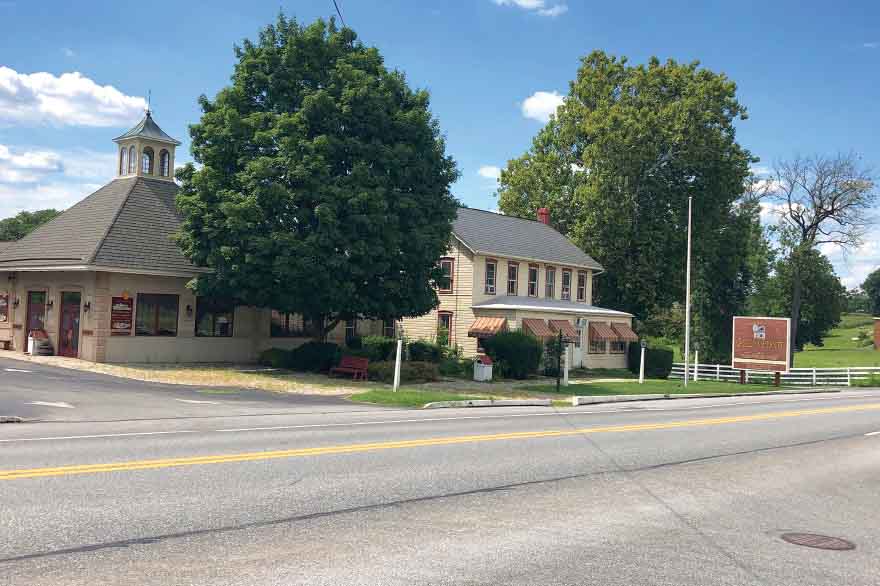In the summer, I had written an article regarding the rumor locally that the Amish were considering opening their own hospital. At the time, it was just something we’d heard “on the grapevine.” But now, details have emerged that confirm this is exactly what is happening. So, here is Part 2 of an article we really didn’t know was only going to be Part 1!
In some ways, the Amish seem to live separated from the world around them. Manners of dress, modes of transportation, use/adaptations of technology, and educational systems are distinctly different from the “English” world around them. Still, the Amish do inhabit the community and amongst non-Amish neighbors. They do business with “English” people, shop at area stores, eat at area restaurants, use local public transportation, and sometimes forge close friendships with non-Amish people.
At times, the stores and services in the community don’t jive well with the Amish sensibility. In years past, the Amish simply had to deal with this discord. But more and more the local Amish are finding that they can develop businesses and services that tailor their presentation to the Amish and the culture of the Plain People.
On the healthcare front, small practices like “The Parochial Medical Center” or “Birth Care and Family Health Services” offering outpatient services and even mid-wife and chiropractic care have sprung up around the area, which is specifically designed to welcome Amish clientele and put them at ease while providing them with cash-based, non-insurance billing. (The Amish don’t have commercial health insurance, though they maintain an insurance alternative within their community that helps address bills that would be insurmountable to an individual household.)
So, when I first heard the rumor that the Amish here in Lancaster County were planning to open their own hospital, it really didn’t shock me – at least not entirely. A hospital is certainly a much more significant undertaking than, say, a chiropractic office. But the concept of the Amish investing with English partners to bring a culturally sensitive institution to life has already proven successful.
Most likely, had the COVID pandemic not happened, the Amish here would not be considering putting up an “Amish hospital.” The main reason? During COVID, hospitals restricted visitation. Isolation of people in hospitals goes against a very core principle and deep cultural vein of the Amish community.
Simply put, when an Amish person is sick, suffering, hurting, or recovering – they have a steady stream of visitors from their church standing by in the hospital with them. Even if the person is incoherent or unconscious, they will have a community presence there at their side. In the Amish community, this is just a given. It is what you do, and it is part of the community.
It broke the collective heart of the Amish community in a way we non-Amish probably can never fully understand that hospitals barred them from being there for their own during the pandemic. Amish people died alone. That sentence is jarring to an Amish person. In their community, it just isn’t supposed to happen. And even those who went to the hospital for one reason or another, and fully recuperated, going through that healing and restoration process alone is just as counterculture to the Amish.
And thus, the rumor mill, in my estimation not surprisingly, is saying we’ll see a new hospital opening in Lancaster County in the coming years, built in large part due to Amish investors, which will operate in such a way as to understand and work with the Amish community.
This rumor was officially confirmed and will become a reality at the former Good ‘N Plenty Restaurant. The 8.5-acre property, which since the early 1960s had served family-style meals to tourists in a restaurant seating 600 people, was purchased in August for a price of 2.9 million dollars.
The restaurant closed in January of 2022, due to a combination of pandemic pressures against the restaurant industry, fatigue of the family running the business (the next generation of ownership in the family backing out of a transition of ownership), and the difficulty of recruiting staff back to the restaurant.
The building is large enough, and ideally located for, the Amish to use as a hospital. When it became available local Amish investors jumped at the opportunity. Personally, I doubt they had any trouble raising capital from within the Amish community to make the purchase, due to the distaste throughout the community for how things went down during the pandemic.
The investor group chartered themselves as Well Spring Care Incorporated. The hospital will offer birth care, chronic care, and urgent care with the intention of being open 24 hours a day, 7 days a week. When the Lancaster Newspaper obtained a phone number for Well Spring Care, as they called it, they received a recorded message: “This clinic will be for the Plain community, supported by the community but run by professional doctors and nurses.”
The hospital project is currently being steered by a committee of five senior Amish bishops, whose vision for the building is a “community effort to provide a pleasant, comfortable, loving Christian atmosphere to care for the sick and suffering, using an efficient, affordable and common-sense approach.” Practitioners at the clinic “will be trained in functional medicine, a balance between natural and medical.”
Just when the now-idle building will be converted from a 600-seat restaurant to an “Amish Hospital” is anyone’s guess. Looks like the rumor mill can churn once again, this time with the topic of “When?”
By Clinton Martin

